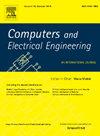Multifactor interpretability method for offshore wind power output prediction based on TPE-CatBoost-SHAP
IF 4
3区 计算机科学
Q1 COMPUTER SCIENCE, HARDWARE & ARCHITECTURE
引用次数: 0
Abstract
Accurate forecasting of offshore wind power output is crucial to the operation and scheduling of wind farms. However, predicting offshore wind power output is challenging because numerous factors influence wind energy. Current research focuses on achieving precise predictions, but the interpretability of models remains poor. In this context, this paper proposes a method that integrates Tree-structured Parzen estimator (TPE), categorical boosting (CatBoost), and SHapley Additive exPlanations (SHAP) to predict and interpret the offshore wind power output. PCA (principal component analysis) is used for meteorological feature preprocessing. The TPE algorithm iteratively searches for the optimal hyperparameters for the CatBoost prediction model. SHAP values are used to analyze the importance of various factors. By examining interactions, we identify the meteorological conditions conducive to efficient wind farm operation. The results indicate that the TPE-CatBoost model outperforms various other models in terms of evaluation metrics. SHAP explains the dependency between features and the seasonal variations in wind farms.
求助全文
约1分钟内获得全文
求助全文
来源期刊

Computers & Electrical Engineering
工程技术-工程:电子与电气
CiteScore
9.20
自引率
7.00%
发文量
661
审稿时长
47 days
期刊介绍:
The impact of computers has nowhere been more revolutionary than in electrical engineering. The design, analysis, and operation of electrical and electronic systems are now dominated by computers, a transformation that has been motivated by the natural ease of interface between computers and electrical systems, and the promise of spectacular improvements in speed and efficiency.
Published since 1973, Computers & Electrical Engineering provides rapid publication of topical research into the integration of computer technology and computational techniques with electrical and electronic systems. The journal publishes papers featuring novel implementations of computers and computational techniques in areas like signal and image processing, high-performance computing, parallel processing, and communications. Special attention will be paid to papers describing innovative architectures, algorithms, and software tools.
 求助内容:
求助内容: 应助结果提醒方式:
应助结果提醒方式:


